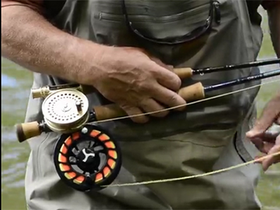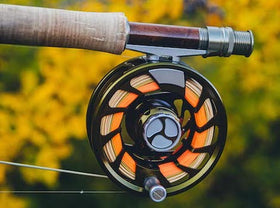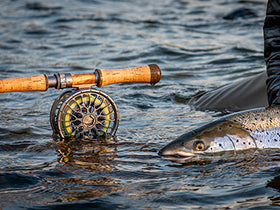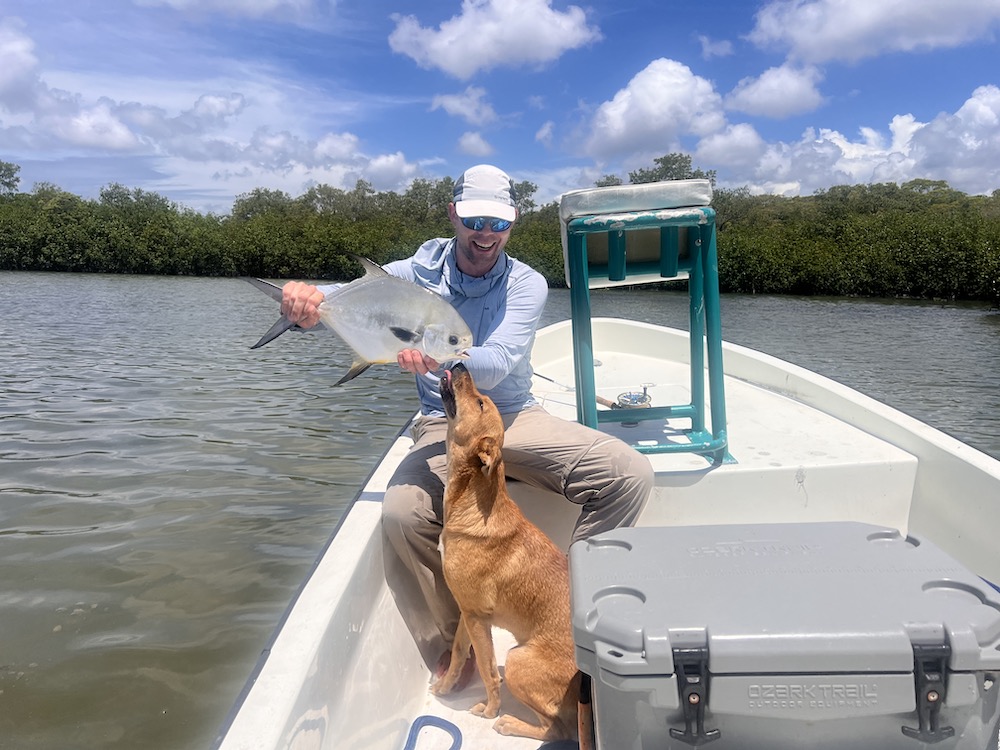
Andrew adjusts a ‘regular’ Caribbean trip to include a decent dose of flyfishing.
Saltwater flats have a way of getting under your skin, and the memory of tailing permit still dances behind my eyelids.
Mexico and Belize have long held a near-mythical status in the flyfishing world, particularly for those of us in the Southern Hemisphere who dream of escaping winter’s chill. The allure of permit, those elusive, arrogant fish that never play easy, was the primary driver for me. While I’ve had my share of tarpon and bonefish encounters, permit have a way of providing unbelievable pleasure and unbearable pain. The shallow Caribbean flats and the promise of consistent shots at these finicky fish – it was a calling I couldn’t ignore.
When my wife and sister-in-law suggested a trip to Mexico, it didn’t take long for me to hijack the itinerary and turn it into a fishing trip – though I did consider there’d be plenty for them to do as well.
Navigating the journey: travel tips and first impressions
The journey itself was a study in contrasts, a transition from the structured world of international travel to the more… free-spirited?… reality of the Caribbean. I embarked on the long haul from Melbourne, Australia, to Los Angeles, and then onward to Tulum, a bustling tourist hub on Mexico’s Yucatan Peninsula. The relatively new direct flight from LAX to Tulum was a godsend, shaving off precious hours and making the initial leg of the journey surprisingly smooth.

Having an experienced driver eliminates any stress and ensures you’re eating at the right places!
However, the change of pace was immediate upon arrival. Forget the orderly traffic we’re accustomed to; Mexican roads operate to a different set of rules, or perhaps, a lack thereof. My first piece of advice, and I cannot stress this enough: ditch the idea of renting a car, unless you possess nerves of steel and a fondness for driving chaos. Pre-arranged transfers are worth every penny, especially for the often-lengthy drives to the more remote fishing destinations. Consider it an investment in your sanity and the avoidance of potential ‘cultural experiences’ with the local constabulary.
The magic of the flats: permit fishing in Mexico
First stop was solo in Xcalak, and the fishing was spectacular. I had the privilege of fishing with Kisi, a highly experienced and passionate guide. His knowledge of the fishery is encyclopaedic, his ability to spot a tailing permit from a mile away is uncanny, and his dedication to putting you on fish is unwavering.
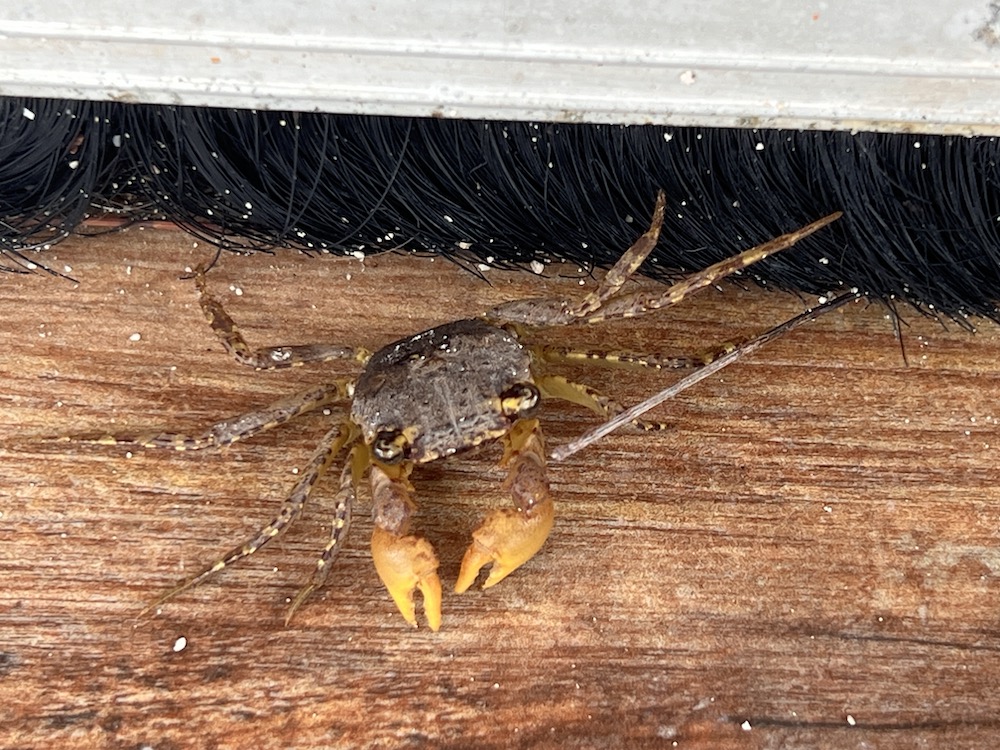
Permit food!
A key part of Xcalak’s appeal is the possibility of finding permit feeding on floating crabs. When the sargassum weed washes up in significant quantities, it creates a habitat for these small crabs, and the permit, opportunistic feeders that they are, gorge themselves on them. It’s like dry fly fishing for trout, although these are permit; a fish designed for feeding off the bottom. It’s a surreal sight watching a permit rise to your fly with its full forehead out of the water.
However, don’t let the social media hype create unrealistic expectations. The floating crab phenomena is a relatively rare occurrence, a fleeting window of opportunity. While it’s spectacular, it’s not something you can reliably plan your trip around. That being said, even when the crab hatch isn’t in full swing, a floating crab pattern can still be an effective fly.
Over the course of several days, I had consistent shots at permit, and that’s what makes Xcalak unique. I landed a few, lost a few and learned a great deal about permit fishing in this part of the world.
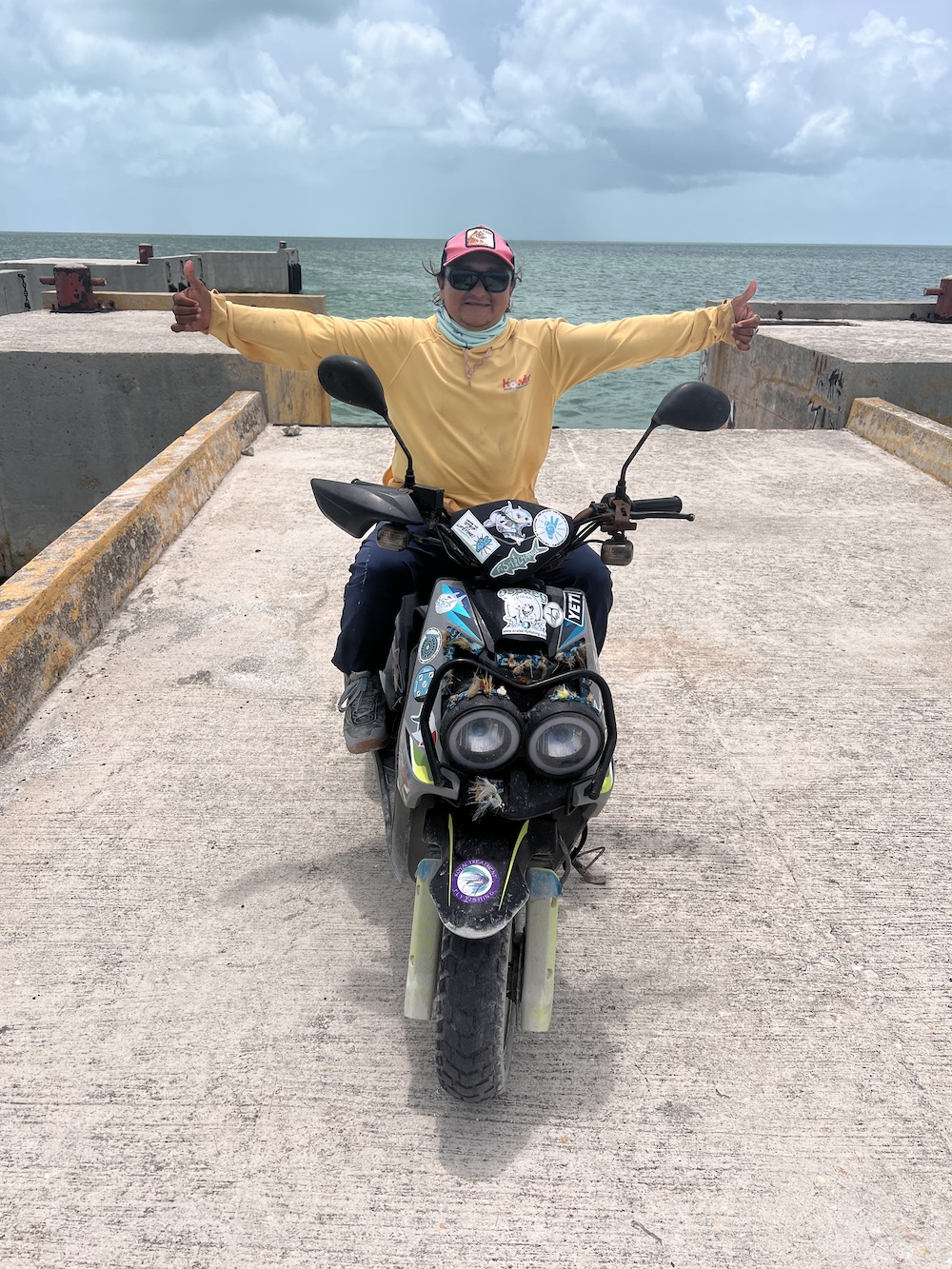
The Grand Slam day: perseverance and a rusty scooter
One of the most memorable days at Xcalak involved an approaching storm (Hurricane Beryl) that grounded all boats. Undeterred, Kisi suggested we explore the flats by scooter. A good guide is one with a backup plan and Kisi had it sorted. The motorised scooter trip was an adventure in itself, navigating bumpy dirt roads, pushing the scooter over fallen coconuts, and witnessing the raw beauty of the coastline.
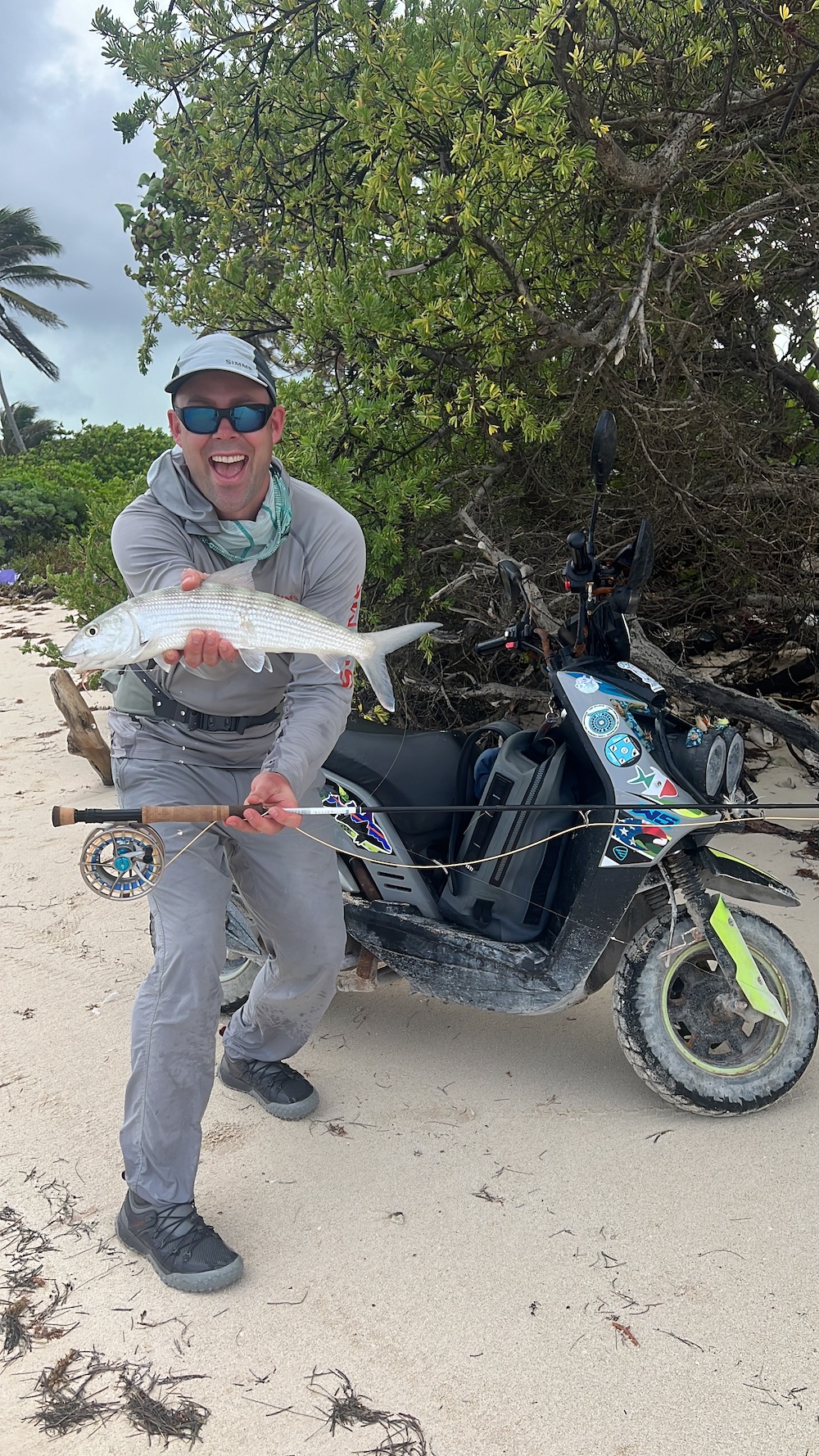
We started with bonefish, easily spotted as they cruised down the beach in small groups. Kisi would control the rusty scooter along the beach, and I’d hop off the back to make a cast when we spotted a likely target.
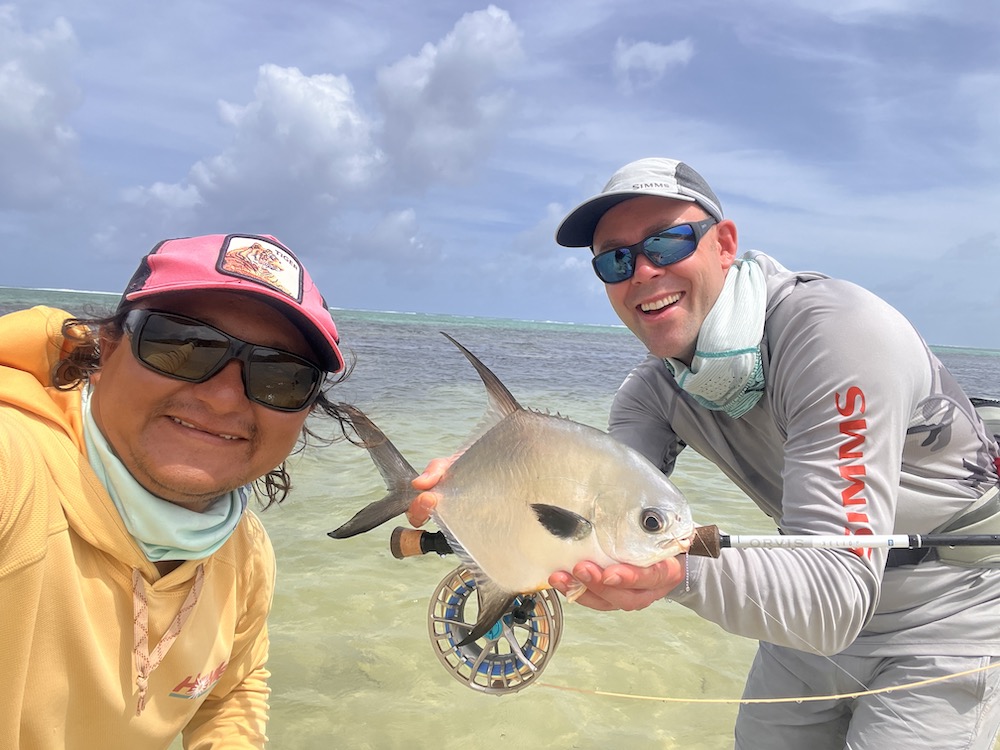
Moto permit success
Then came the permit in much the same way. A pair of fish darting over the flat making their direction unpredictable. After a few shots, I managed to land a small one. I was keen for a size upgrade but at the very least, I knew we’d ticked off the hardest part of any Grand Slam. With enough of the day left, we continued focusing on permit and eventually found a small group tailing in a rocky area. The casting was challenging, with limited backcast room and waves crashing around us. However, after a few attempts, I managed to get the fly in front of one. But it wasn’t meant to be and after short run, the hook fell out.
As the sun began to dip below the horizon, Kisi suggested we try for tarpon to round out the Grand Slam. We motored to a spot where dirty water met clean, and sure enough, tarpon were rolling in the murky water. Tarpon are notoriously difficult to hook, and I lost a couple before finally connecting properly with one just as it was getting dark. The fish leaping and thrashing in the fading light was a great way to end a day that most guides (and probably clients) would have written off. Who needs a boat for a Grand Slam!
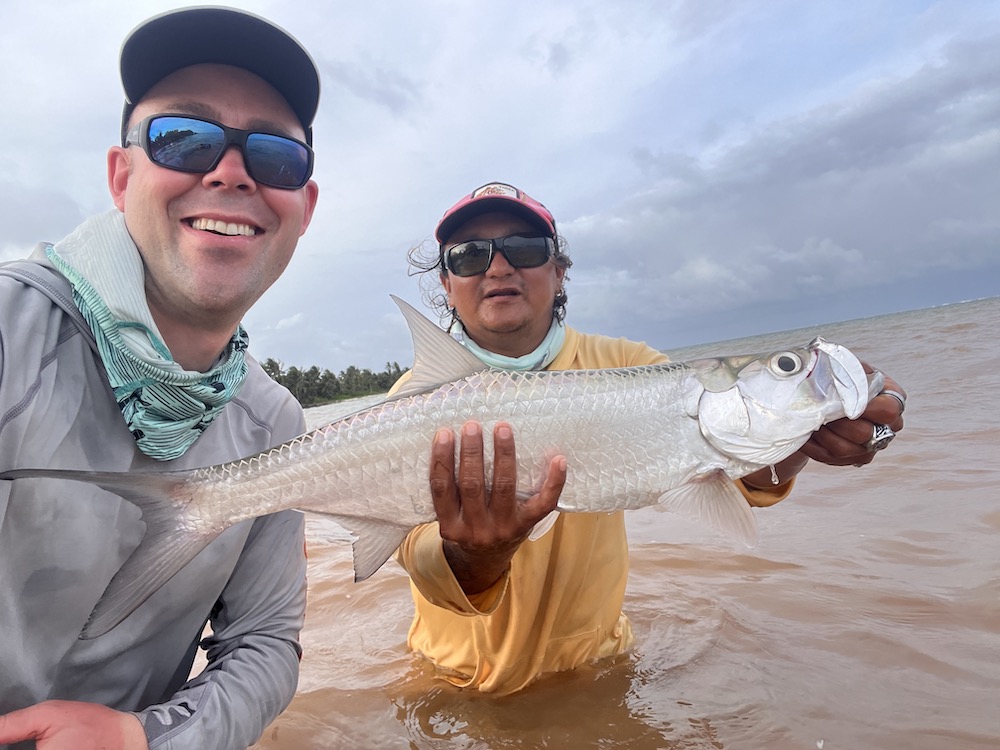
Placencia: a hidden gem of Belize
After Mexico, I headed to Placencia, a stunning coastal destination which offers exceptional flyfishing opportunities while also catering to non-fishing companions. With its pristine beaches, excellent restaurants and luxurious accommodations, it strikes the perfect balance between adventure and relaxation. Whether you’re casting for permit on the flats or unwinding by a pool with a swim-up bar, Placencia provides for both anglers and holiday makers.
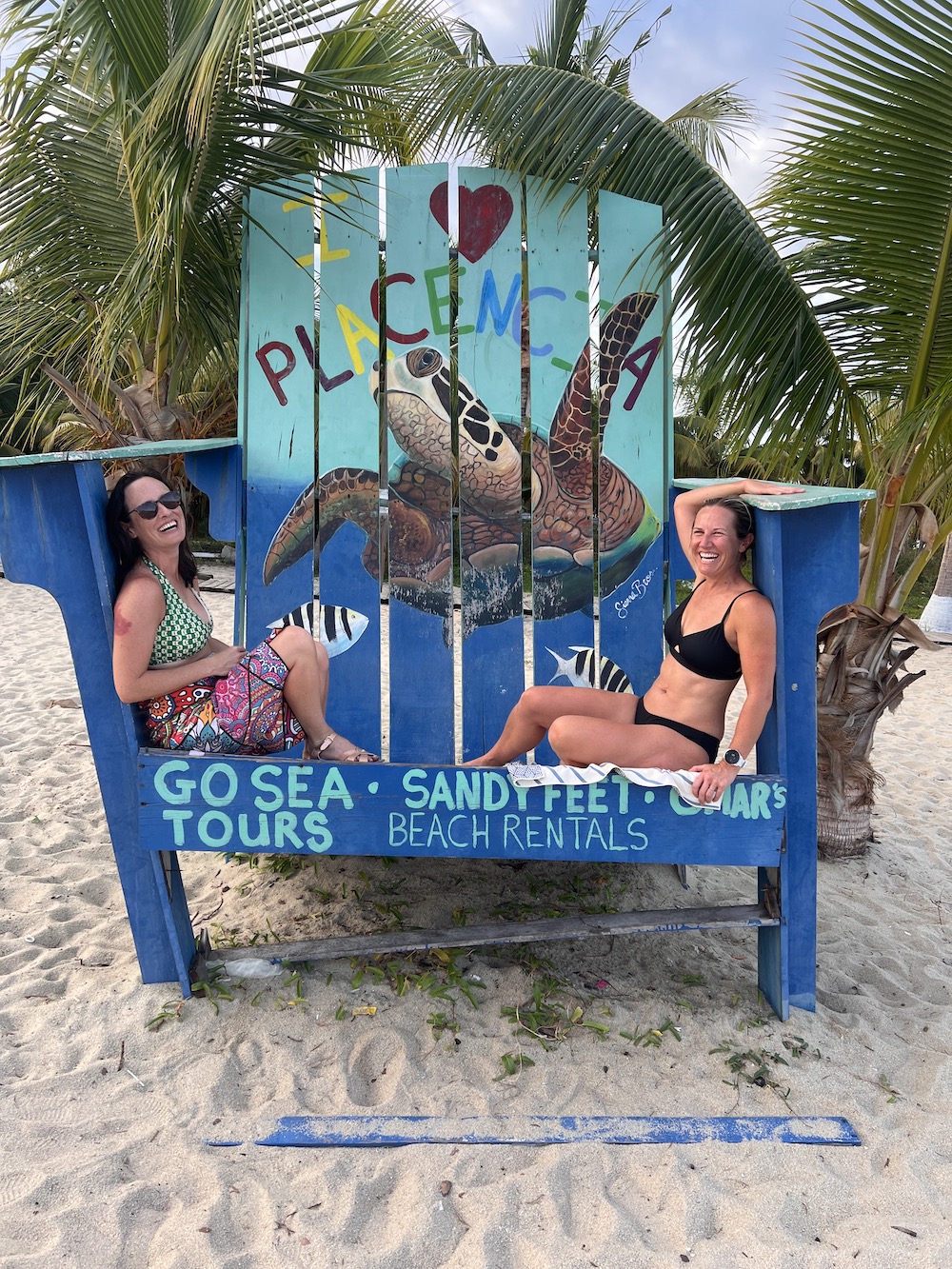
Placencia offers lots of fun and relaxation for non-fishing companions.
Despite the lingering effects of a recent storm, the fishing in Placencia was exceptional. My guide, Dermin Shivers, was another who wasn’t afraid of going the extra mile. He would keep an eye on the regularly crappy weather, so if any window opened, we could head out.
Here, I had the opportunity to target permit in incredibly skinny water, conditions that demand precision casting and a delicate presentation. I also encountered some jack crevalle which are like a trevally. They’re powerful and provided a welcome change of pace. Of all the places, this was the one where I thought I could easily spend a huge chunk of time getting to know the fishery better, and chilling out. The girls loved it.
My Belizean good luck charm: a permit and a pup in paradise
The rain in Placencia just wouldn’t let up and I was beginning to think my last days fishing there would be a write-off. However, dedicated Dermin kept an eye on the weather and we eventually got an opening in the clouds around midday.
The water was milky, visibility poor, and the permit seemed to have vanished. We hopped from spot to spot, Dermin’s optimism slowly beginning to wane.
And then, I saw it.
About 200 metres away, a flash of red in the mangroves caught my eye. At first, I dismissed it. But something about the way it moved, low to the water, made me take a second look. From a distance I thought it resembled a pig’s head, bobbing along the edge of the mangroves. “Weird,” I muttered to myself, but decided not to say anything. I didn’t want to be that tourist, pointing out stingrays and asking if they were permit.
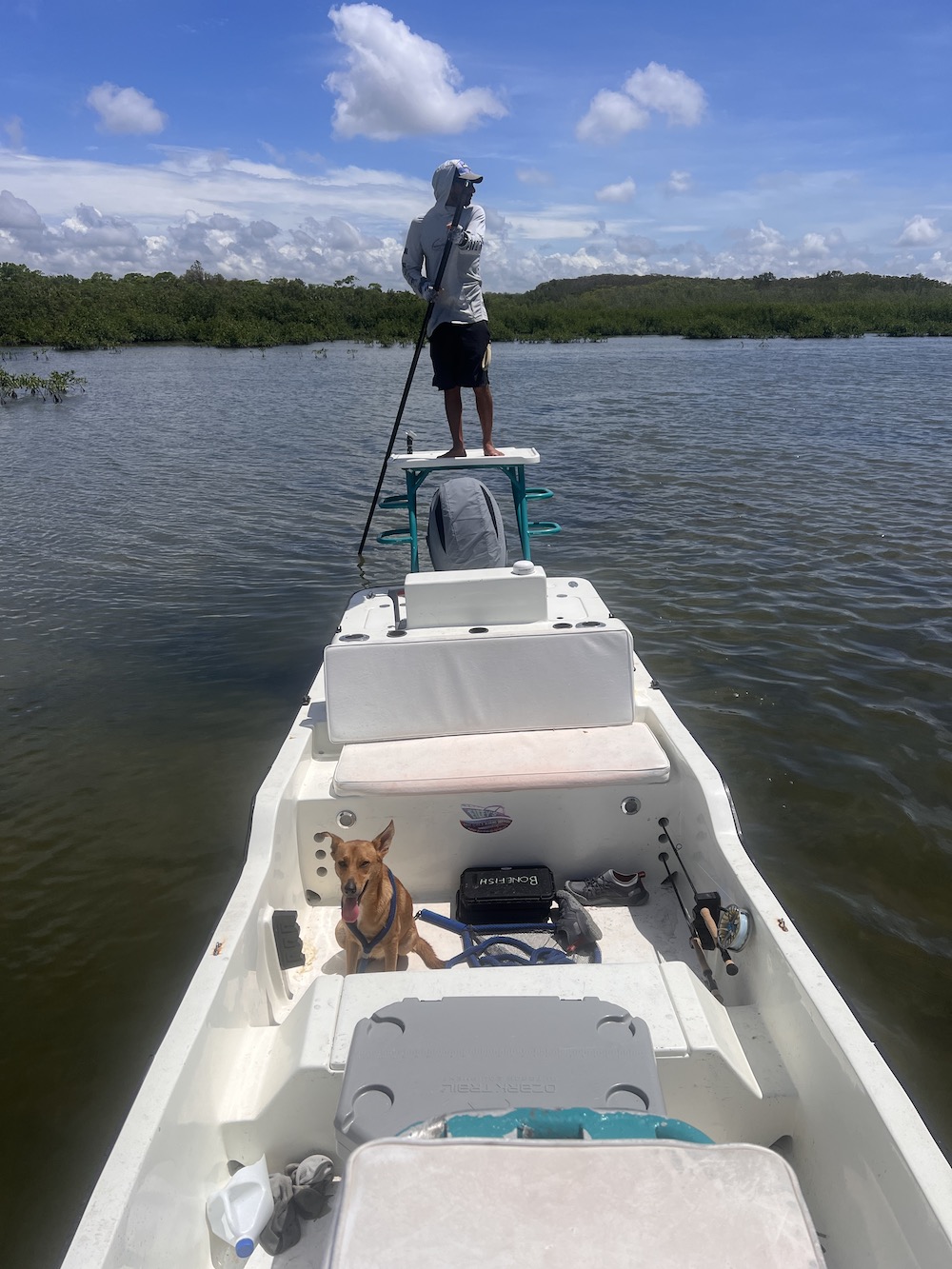
Who’s a good girl?!
About ten minutes later, as Dermin poled us along a flat, I looked back. And there it was, dog-paddling behind the boat. A small, reddish-brown dog, looking remarkably cheerful despite the torrential downpour.
My initial reaction was concern. “How long has this poor thing been out here? It’s going to drown!” Dermin tried shooing it away, assuming it belonged to one of the small, temporary camps we’d seen along the coast. But the dog was persistent, its eyes fixed on the boat, clearly wanting to come aboard.
“I think we’re going to have to pull her in,” I said. Dermin agreed, though with a hint of apprehension. I’d find out later he thought there was a good chance the dog might bite me. As I pulled the dog into the boat, she went completely limp, her limbs splayed out in a state of utter relaxation. It was as if she’d been waiting for someone to rescue her for hours.
She was the happiest, most friendly creature imaginable. We gave her water, which she lapped up gratefully, and Dermin produced a burrito, which she rapidly devoured. Soon, she was bouncing around the boat, a whirlwind of wet fur and wagging tail.
“Oh, great,” I thought. “Now we’ve got a hyperactive dog on board with sharp hooks and fly-line everywhere.”
Dermin found a rope with a loop in it. We gently slipped it over the dog’s neck, and miraculously, she calmed down instantly. She sat quietly, her eyes fixed on the water, as if she was now part of the fishing crew.
And that’s when the magic happened.
We moved back to a spot where Dermin had seen fish earlier, and almost immediately, permit appeared. It was like the dog had brought them with her. The next 45 minutes were a blur of spotting fish and casting, before soon enough, a permit inhaled the fly.
The dog, now firmly established as my good luck charm, watched intently. After a tense fight, I’d landed a beautiful permit and shared in the glory with my new fishing mate.

The photo we got – me, beaming, holding the permit, with the dog giving it an affectionate lick on the nose – is one of my all-time favourites. It perfectly captures the craziness of the day.
The fishing eventually slowed, and it was time to find the dog’s home. We motored through a maze of mangrove tunnels, before coming across a small jetty. A family was there – a young child, a husband, and a wife. We coaxed the dog onto the jetty, and they took her in.
But then came the surprise: “She’s not our dog,” they said.
The mystery of where she came from, and how she ended up paddling in the middle of nowhere, remains unsolved. But one thing is certain: she was my good luck charm that day. She turned a potentially fruitless fishing day in crappy weather, into one of the all-time great fishing days. Sometimes the best stories are the ones you least expect. And in Belize, with its vibrant culture and unpredictable charm, those stories are never far away.
Caye Caulker: tarpon territory and island vibes
The final leg of my journey took me to Caye Caulker, a trendy and bustling island off the coast of Belize. This island has a vibrant and energetic atmosphere, with golf carts zipping around and a constant flow of tourists. Caye Caulker is renowned for its tarpon fishing, and I had the opportunity to target them in the shallow waters surrounding the island.
However, I did observe the noticeable impact of angling pressure. The island and its surrounding fishing grounds are relatively small, and there are numerous lodges, charter boats, and even liveaboard operations catering to flyfishers. This can, at times, create a sense of fishing second-hand water, where the fish have seen a lot of flies and are more easily spooked.
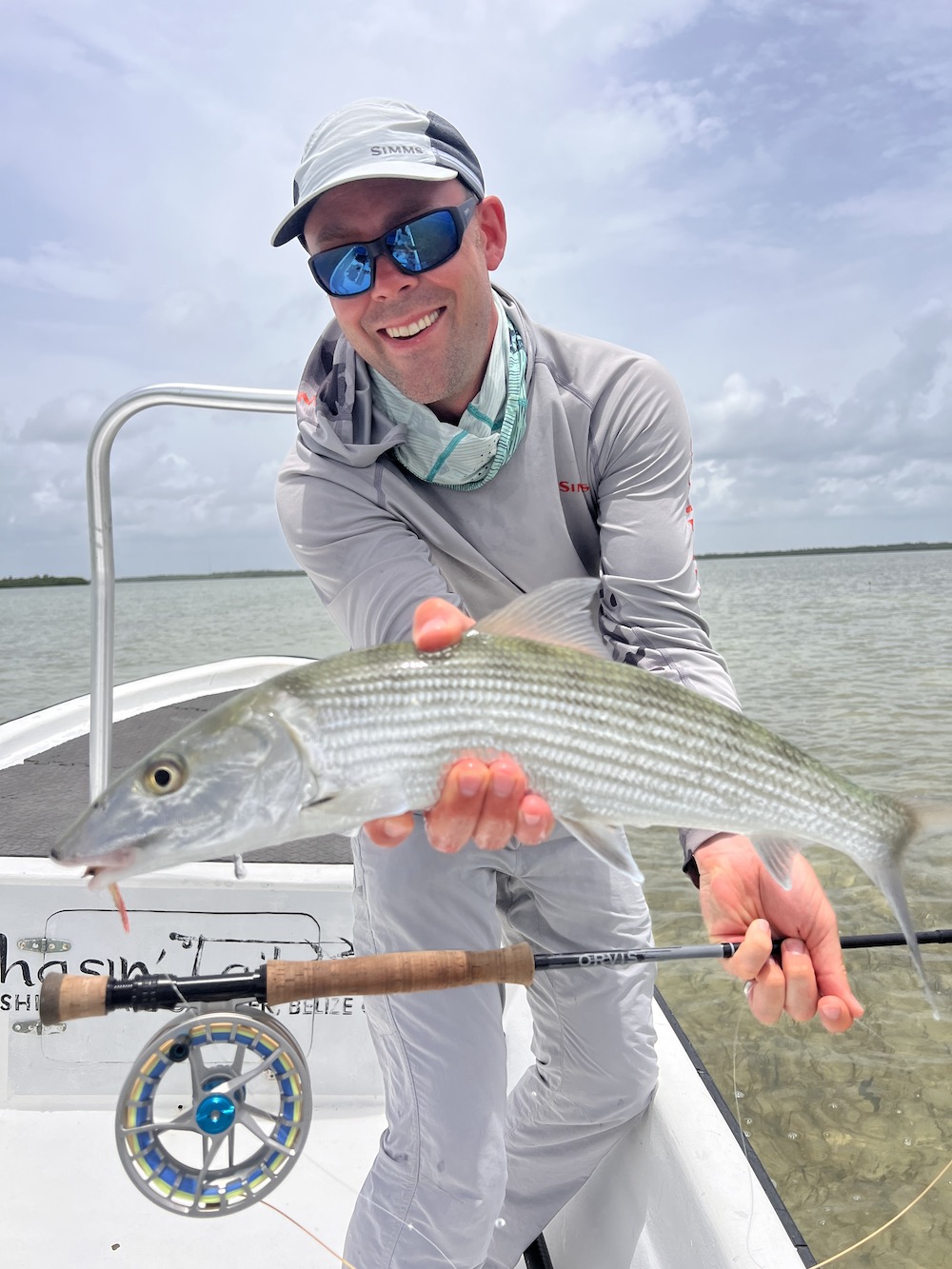
A solid Caye Caulker bonefish.
Final reflections
My journey through Mexico and Belize was a great adventure with breathtaking scenery, vibrant cultures, incredible fish and fascinating people. They’re destinations I wholeheartedly recommend to any flyfisher. This trip was well up there as being equally suitable for both flyfisher and non-fly fisher, so if you’re looking for that kind of trip, I highly recommend heading to these spectacular Caribbean locations.





